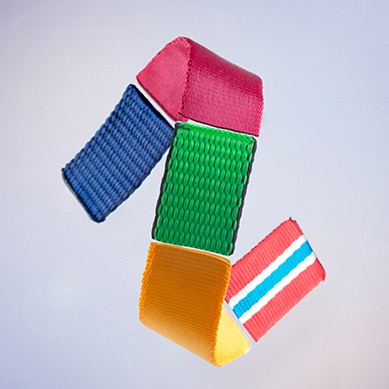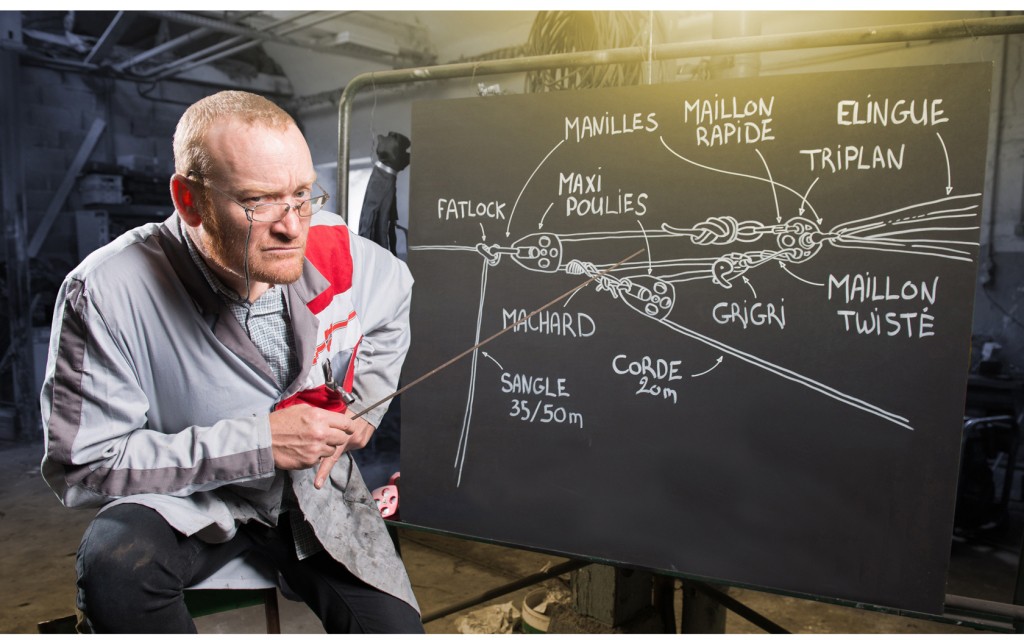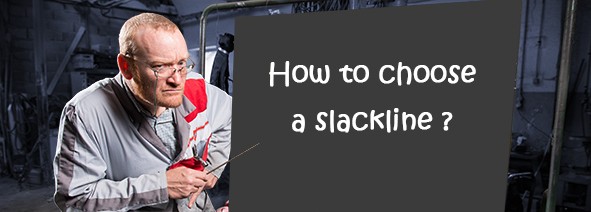From Monday to Friday 09:00am - 18:00pm
Which slackline webbing to choose ?
Published :
03/18/2020 10:46:07
Categories :
General

There are dozens of slackline webbings on the market, more or less different, more or less sophisticated. This article is aimed at people who do not have all the technical knowledge of experts and allows you to make a first sort in your needs and possibilities.
Article summary :
1) The construction / shape of a slackline (flat or tubular)
2) The stretch of a slackline
3) The weight of a slackline
4) The comfort of a slackline
5) Tips for buying a slackline kit
Here is already a table which gives an overview of the different characteristics of the slackline webbings. The ones that you need to know to be able to make your choice.
Below we explain in more detail the why and how!
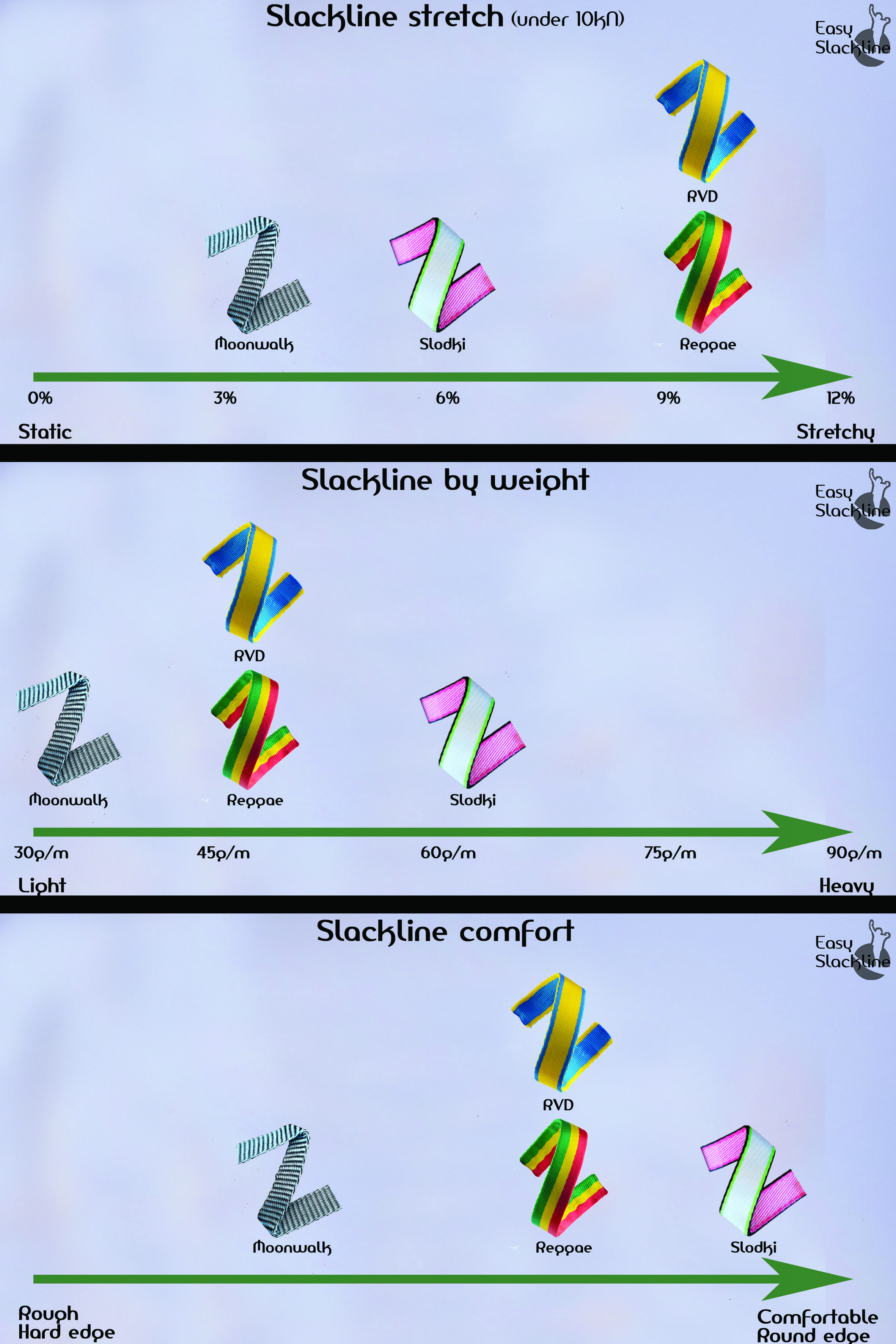
1) CONSTRUCTION / FORM
Tubular or flat - it's all in the name!
Flat webbings are flat, as can be seen below (the Slodki) :
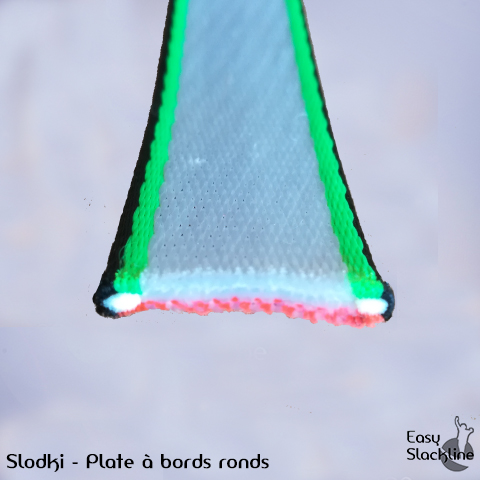
The tubular webbins will have a tube shape under tension, as can be seen below (RVD and Reggae).
The advantage is that thanks to this shape, the edges are rounded and become very soft :
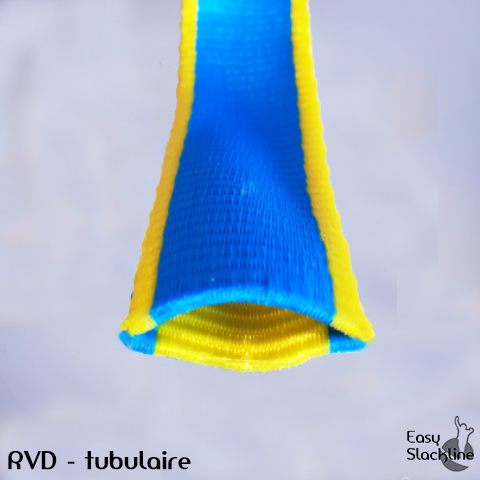
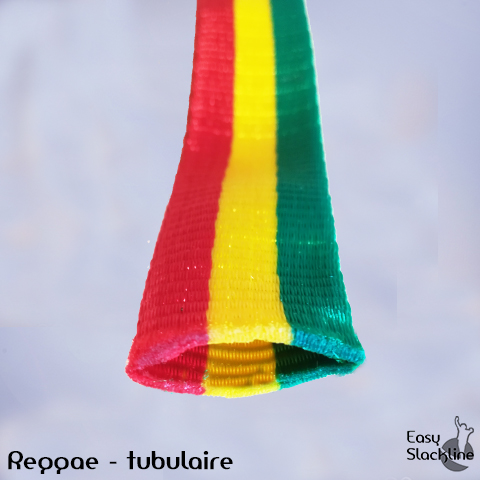
2) THE STRETCH OF A SLACKLINE
The tubular webbingss will be more stretchy. This is due to their weave.
Flat webbings will be easier to tension (especially over 35m and more).
The more stretchy a webbing is, the more playful is at the bounce (the "swell" in our vocabulary).
But the more difficult it will be to tension it over long lengths (35m and more).
Concrete example:
RVD and Reggae (tubular webbing), the stretch is 10% under 10kN (approx. 1T of tension). This means that to tension 100m at 10kN, 10m of webbing will be necessary to tension.
Slodki (flat webbing), the stretch is 5.9% under 10kN (approx. 1T of tension). This means that to tension 100m at 10kN, 5.9m of webbing will be necessary to tension.
The Moonwalk (hybrid flat webbing), the stretch is 3.4% at 10kN (approx. 1T of tension). This means that to tension 100m at 10kN, 3.4m of webbing will be necessary to tension.
Caution!
Using more webbing to tension does not mean pulling harder. You just need a tensioning system that allows you to pull a longer length of webbing:
a longer length of webbing used in the primitive system...
a longer length of rope used in the pulley system
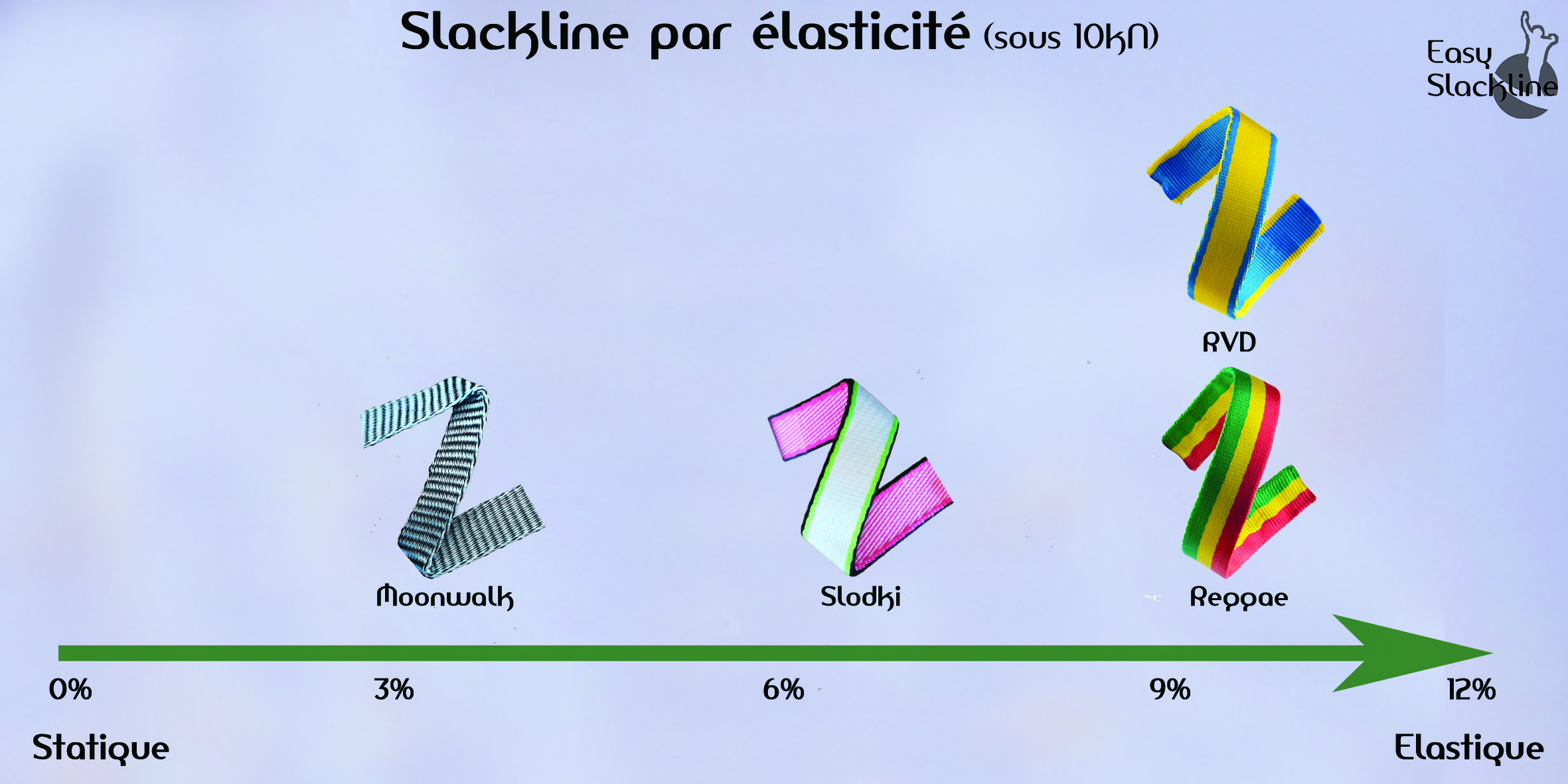
3) THE WEIGHT OF A SLACKLINE
Weight plays a role in the difficulty of walking on a slackline. The heavier the slackline is, the more difficult it is to walk on.
! SCOOP!
It's not the slackline that moves! It's you that makes the slackline shake :-)
A strap without a person on it doesn't move, and yes!
But to get back to the weight of a slackline, it's like comparing the undulation of a standard rope to a metal chain.
The rope, much lighter than the chain, will easily create a ripple if you shake it on the ground, but with a fairly low propagation. It will be easy to stop it by muscle sheath your body.
Whereas with a chain it will be more difficult, but the ripple will propagate much further and with greater force. It will be much harder to stop it by muscle sheath your body.
In slackline, roughly speaking, it's the same thing:
It's going to be easier to walk on a lighter webbing...
The ripples created are weak. This can be a plus when you walk over very long distances (100m and more). Moreover, world record webbings are often the lightest on the market, like the Moonwalk (34g/m).

A heavier webbing will require more technique, to be "cleaner", but allows for more technical progress.
Moreover, one of the advices given to progress without increasing the length is to double your strap by taping a second strap underneath it (without tightening it). This increases the weight, and therefore the difficulty.

Slodki (61g/m)
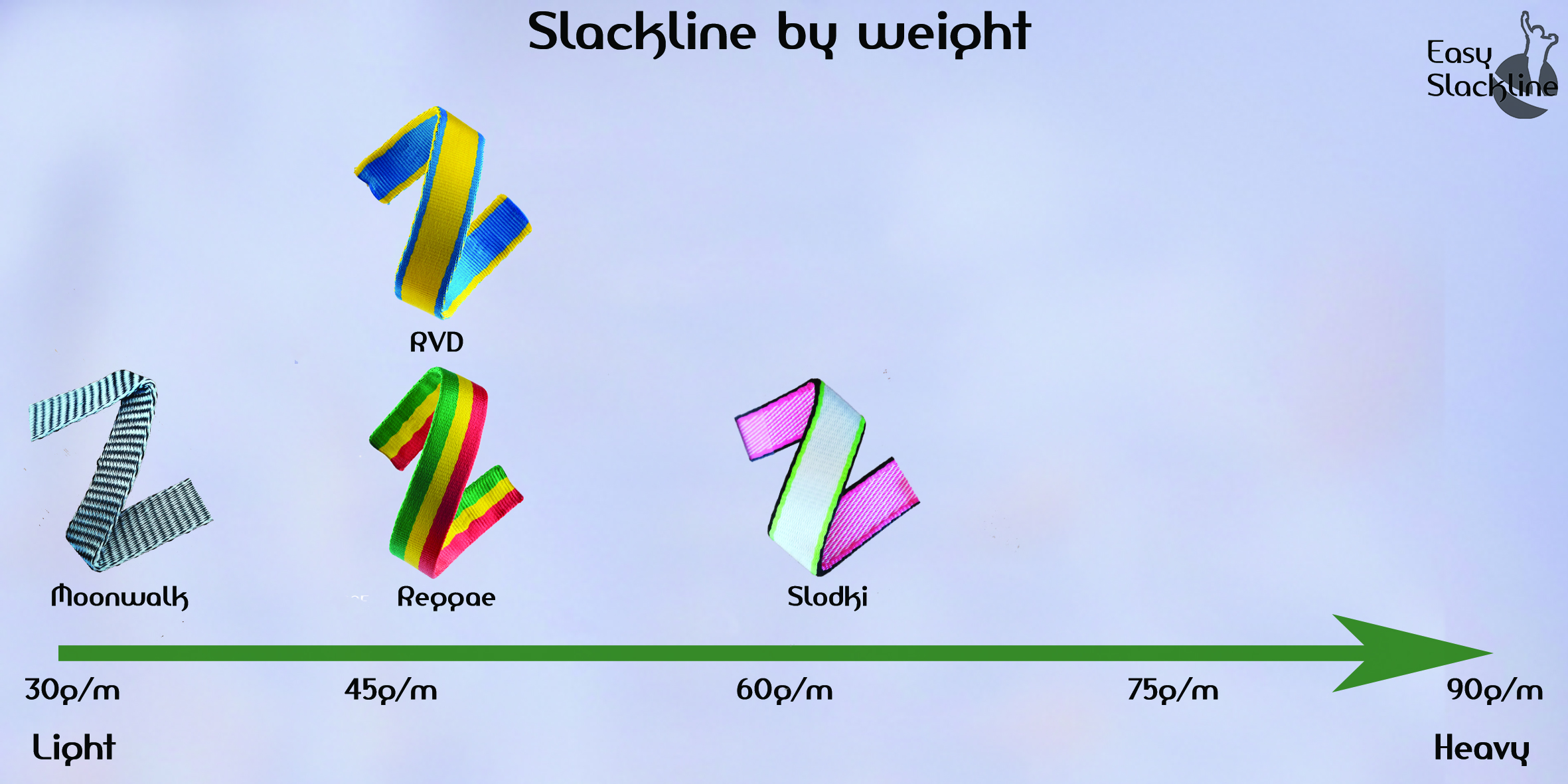
4) THE COMFORT OF A SLACKLINE
Everyone has their own definition of comfort. In this article I will start from the fact that, comfort is the more or less pleasant feeling of the contact between the slackline and the foot (or body).
4.1) The weaving of the slackline webbing
The weave plays a lot on the level of roughness to the touch. Is the surface of the webbing rather smooth, or rather raised?
A simple way to find out, without being able to touch the strap, is to look at a photo and see the weave shapes on the surface of the webbing.
Case in point:
On a rather smooth webbing / soft, it is difficult to distinguish the course of the threads on the webbing as the tubular RVD or Reggae:
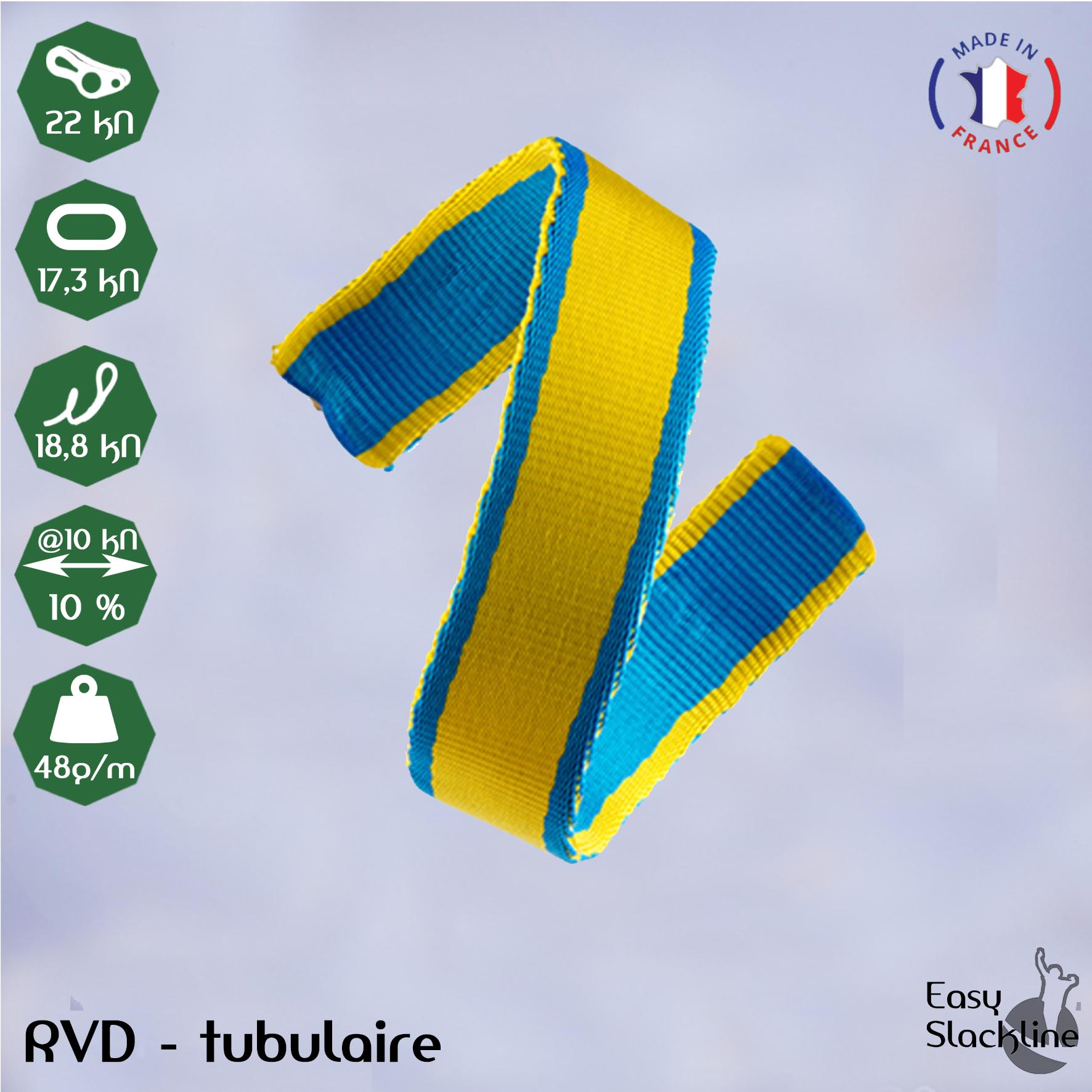

On a rather rough webbing, you can guess very well the course of the threads - the KillBill (no longer available for sale) :
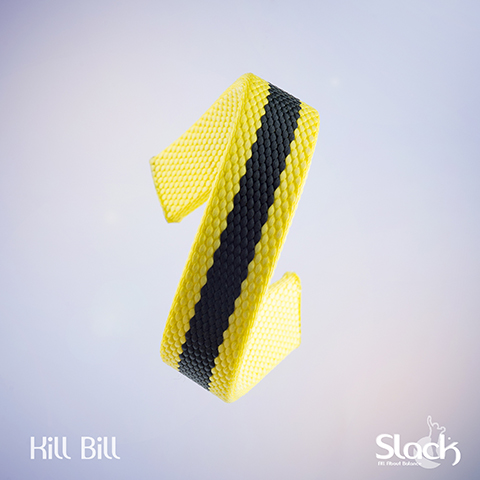
4.2) The rounded edges
Another important parameter for the comfort of the feet, but also and perhaps above all for the comfort of the body: the rounded edges!
Those who know the term "to catch" in our vocabulary, know what I'm talking about. "Catching" is the act of catching up with the webbing / grabbing it, to avoid falling off completely.
Either by catching it with your hands or by wrapping yourself around it with your body. This is especially the case for waterline and highline.
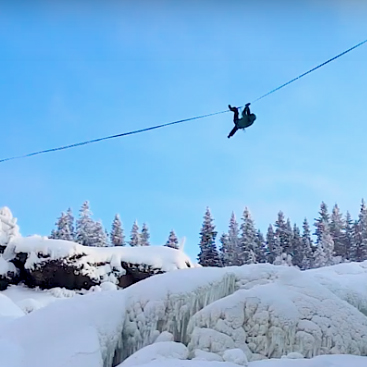
The thicker a webbing is, and especially the more round edges, the less pain it will cause:-D
Here's a concrete example:
The Moonwalk, a very light, but very thin webbing, and therefore with not very round edges, logical:
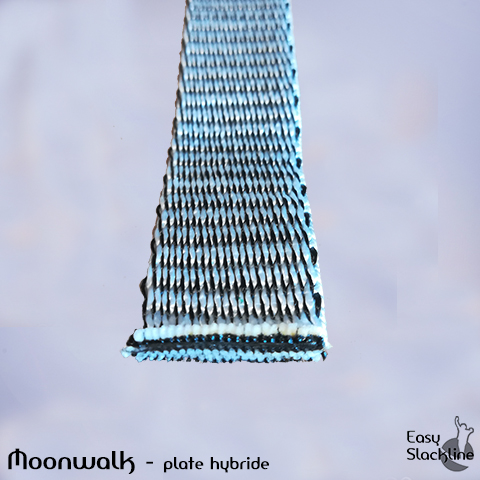
The Slodki, a rather thick webbing, with ultra round edges, super comfortable. The structure of the webbing is clearly visible, the weave of the very round edges:

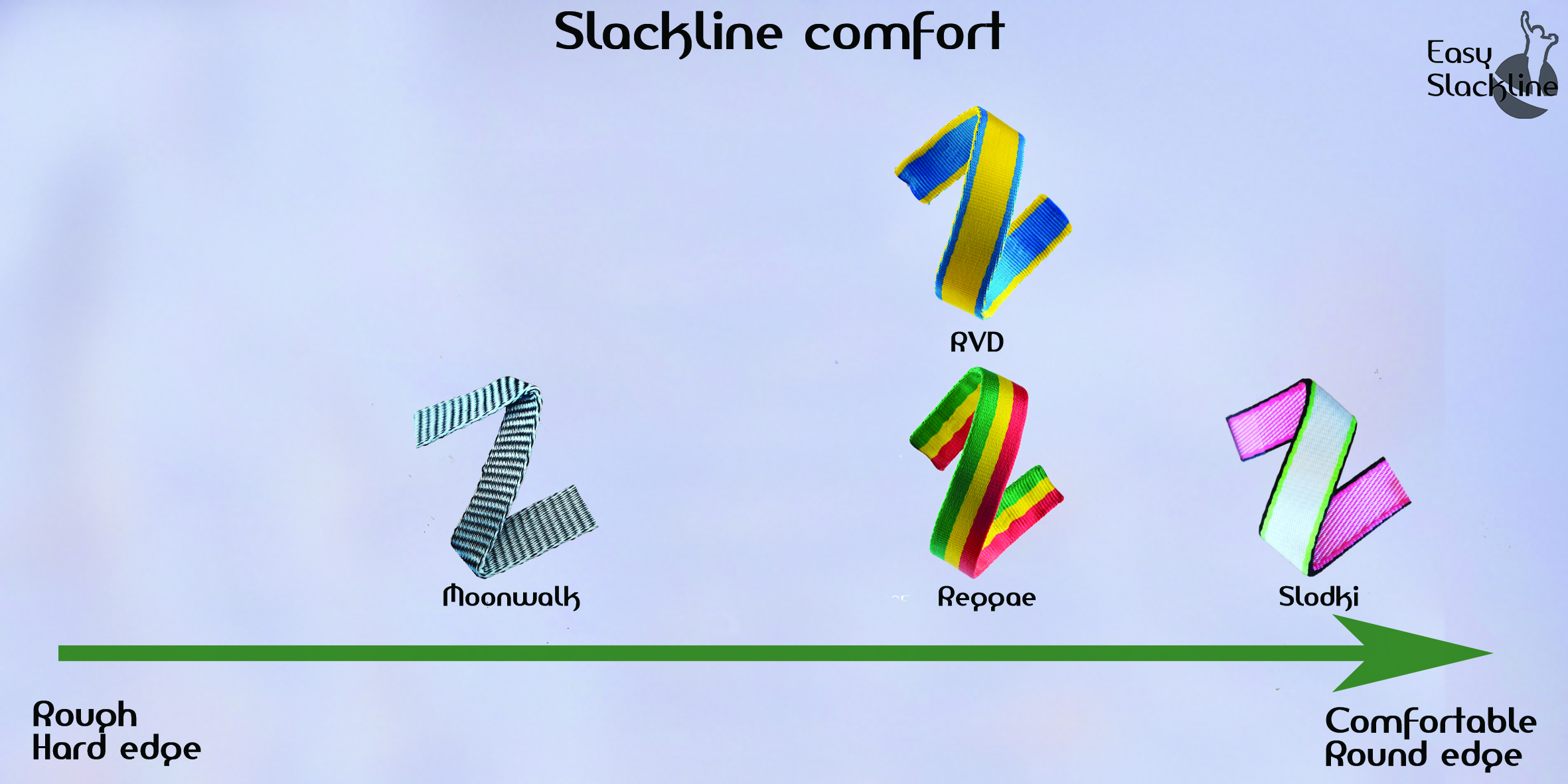
5) TIPS FOR BUYING A SLACKLINE KIT
For kits of 25m and less:
Why take a tubular strap?
Tubulars are very versatile webbing, rather comfortable because they tube when tensioned (so rather rounded edges), but above all, they are stretchy.
They will allow you to have a playful webbing even under medium tensions and medium lengths.
Why take a flat strap?
To have a webbing that will stretch quickly and less technically demanding.
----
For kits from 35m to 50m:
Why take a tubular strap?
On these lengths, tubulars are still pleasant to stretch despite their stretch. And you will walk on a real playfull line.
Why take a flat strap?
To have a webbing that will stretch quickly and that will allow you to cross long lengths more easily.
----
For kits longer than 50m:
I'd recommend flat webbings. Less stretchy = easier to tension, especially on the ground (Slodki or Moonwalk).
I do not recommend the tubular except for a very specific use (highline or waterline for example).
Why ?
To stretch on the ground over 50m and more, I think you should prefer flat webbing with less stretch. Otherwise, unless you put your anchor points on the trees at 4m or even 5m high, you will always end up touching the ground in the middle.
Tensionning VERY HARD is not the solution (danger, comfort of practice).
To conclude...
I think that these 5 points will already help you to see more clearly on all the possibilities which are offered to you. Even if we can still add some details.
If things are not clear, don't worry, pick up the phone and call me!
A phone exchange can help you finalize your choice :-D
